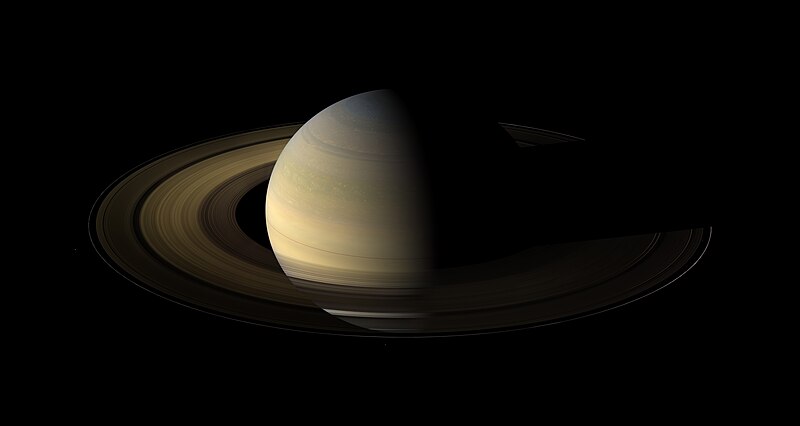Barakas:Saturn, its rings, and a few of its moons.jpg

Takaran tilikan ngini: 800 × 426 piksal. Risulusi lain: 320 × 170 piksal | 640 × 341 piksal | 1.024 × 545 piksal | 1.280 × 681 piksal | 2.560 × 1.363 piksal | 7.227 × 3.847 piksal.
Ukuran asli (7.227 × 3.847 piksel, ukuran barakas: 3,58 MB, tipe MIME: image/jpeg)
Riwayat barakas
Klik pada tanggal/waktu gasan manjanaki barakas ngini wayah itu.
| Tanggal/Waktu | Miniatur | Matra | Pamakai | Ulasan | |
|---|---|---|---|---|---|
| wayahini | 8 Juni 2014 00.08 |  | 7.227 × 3.847 (3,58 MB) | NH2501 | Lower compression, taken from http://www.dlr.de/media/en/desktopdefault.aspx/tabid-4986/8423_read-12880/8423_page-2 |
| 22 Siptimbir 2009 02.24 |  | 7.227 × 3.847 (1.018 KB) | Originalwana | {{Information |Description={{en|1=Seen from our planet, the view of Saturn's rings during equinox is extremely foreshortened and limited. But in orbit around Saturn, Cassini had no such problems. From |
Tautan barakas
Tungkaran nangini mamakai barakas ngini:
Pamakaian barakas global
Wiki lain nangini mamakai barakas ngini:
- Pamakaian pada ar.wikipedia.org
- تيتان (قمر)
- زحل
- هايبريون
- عملاق غازي
- إنسيلادوس
- برنامج فوياجر
- بيونير 11
- كاسيني-هويجنز
- أطلس (قمر)
- أقمار زحل
- برومثيوس (قمر)
- باندورا (قمر)
- بان (قمر)
- ميماس
- S/2009 S 1
- جانوس (قمر)
- S/2007 S 2
- دافنيس (قمر)
- هاتي (قمر)
- بيستلا (قمر)
- S/2007 S 3
- S/2006 S 3
- S/2004 S 7
- فارباوتي (قمر)
- طرقيق
- ديون (قمر)
- سكول (قمر)
- جريب (قمر)
- نارفي (قمر)
- فورنجوت (قمر)
- هيروكين (قمر)
- آيجير
- سكاثي (قمر)
- بيرجلمير (قمر)
- تريمر
- جارنساكسا (قمر)
- كاري (قمر)
- مونديلفاري (قمر)
- سورتور (قمر)
- بيبهيون (قمر)
- لوج (قمر)
- فينرير (قمر)
- إريابوس
- يمير (قمر)
- سوتونجر (قمر)
- كيفيويك (قمر)
- بالياق
- S/2004 S 4
- S/2006 S 1
- S/2004 S 13
Lihat labih banyak pamakaian glubal matan barakas ngini.

